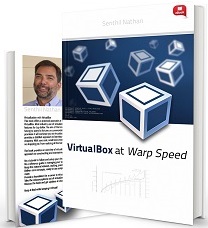Preface
Virtualization has become mainstream. Anyone wanting to virtualize their operating system can do so on their laptop or desktop. I approached it the same way because I needed to virtualize a Linux server on my work desktop. I experimented with VMware player and I realized it required a license (VMWare player plus) for commercial use. I wanted to get a server up and running and did not wish to spend time and effort procuring licenses, so I embarked on VirtualBox as it's free. VirtualBox helped me get my server going that same afternoon. As I delved into the world of virtualization, I realized that there isn't much to learn to get started. However, as I started learning I realized there is much to know to realize the full power of virtualization.
Unlike VMware player which is a basic apparatus for virtualization, VirtualBox let's you do the basics and includes advanced virtualization features for free. This intrigued me and I delved deeper.
I run my own server at home on physical machines and I recognized that I needed to move them to virtualized servers. It will ease some of my pain points with upgrades, testing and segregation of the architecture. I can now architect my server much like the ones I build for my clients without having to buy a dozen servers. Besides cost, I value space, power consumption, time and effort to maintain my server. These considerations are manageable with VMs.
When I embarked on the task of redesigning my home brew infrastructure, I dug deeper into the technology. And as I researched, I learned interesting things both about virtualization and VirtualBox. I wanted to be confident that the technology and tools would help me achieve my goals. The server at my home is a production server as it servers several email gateways, a hundred plus websites (my friends host with me for free), and several applications. If I am considering to virtualize my production server with a 7×24 up-time requirement, I wanted to be sure.
As I was reading and experimenting more with virtualization with emphasis on VirtualBox, I was excited every step of the way. During this process, I felt compelled to write this book. There was not a comprehensive and practical book of the technology and tools available. There was a lot of scattered information on the internet, but nothing concise and organized to educates someone to become a competent virtualization administrator. The discussions (online) were limited to use of simple GUI functions of VirtualBox and limited use of the more advanced features. Also, VirtualBox has evolved over the years, as has the rest of virtualization technology. This has left much of the online discussions outdated or sometimes inaccurate. I also found a lot of misconceptions about virtualizations and VirtualBox which I will help to uncover in this book.
My own adoption has been slow as I had to spend countless days experimenting between what works and what does not. The standardization and solution that I am presenting in the book has been already achieved in the commercial space. But I am not looking to buy expensive software for my servers. I needed something simple, working, maintainable, automatable and free. With these considerations I wrote a manual that I can follow and be successful. That manual is now this book, born out of my own desire to document my knowledge of VirtualBox.
